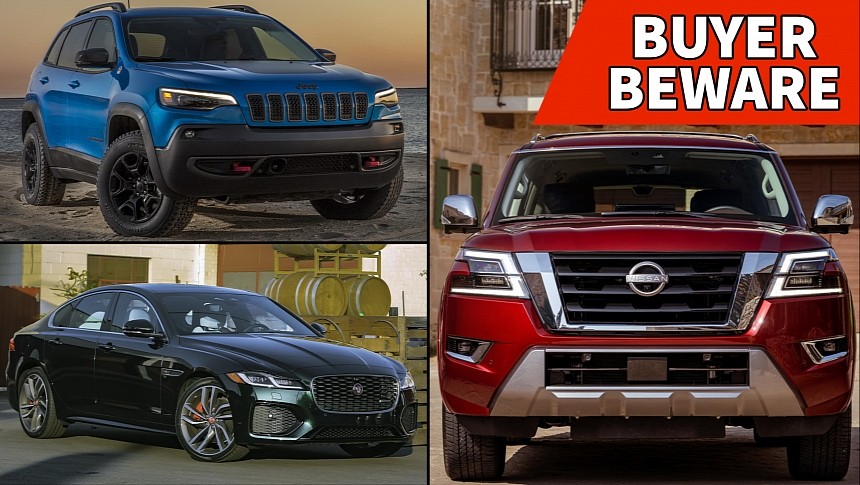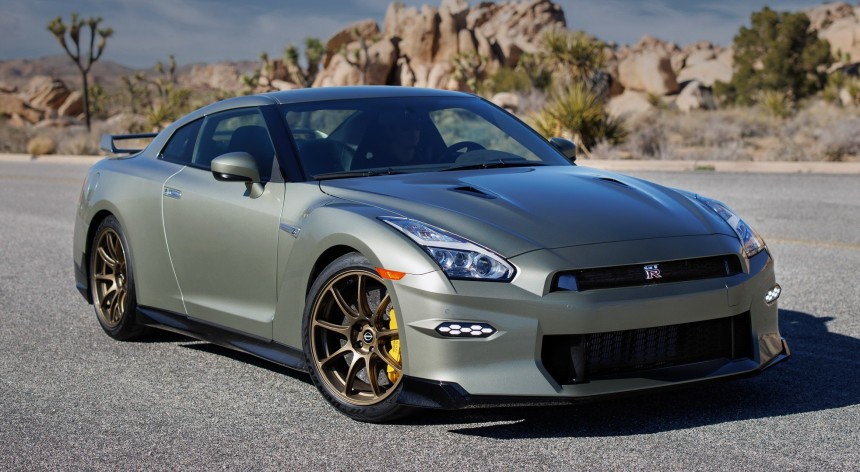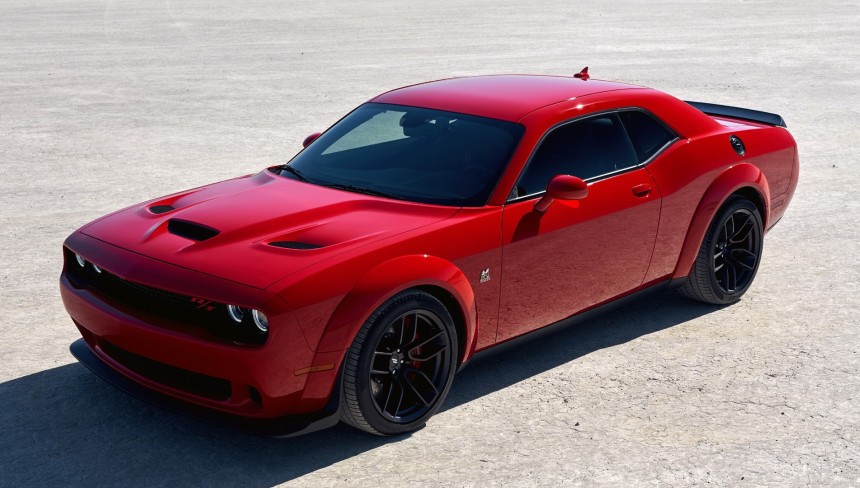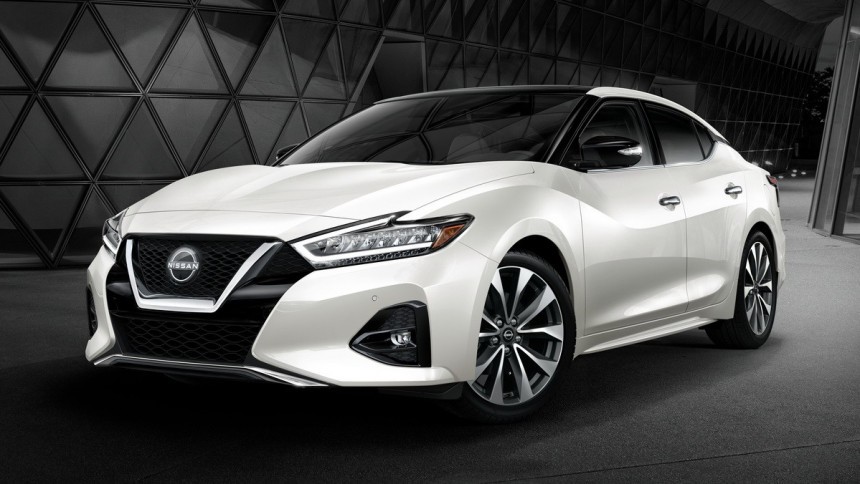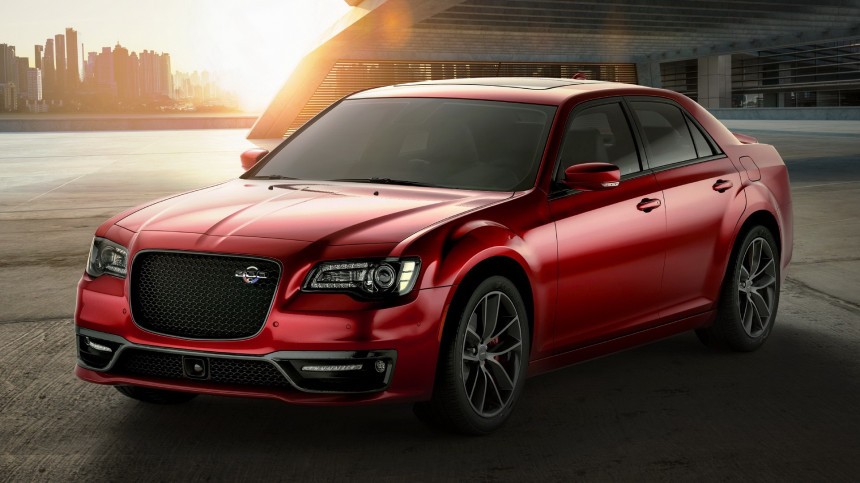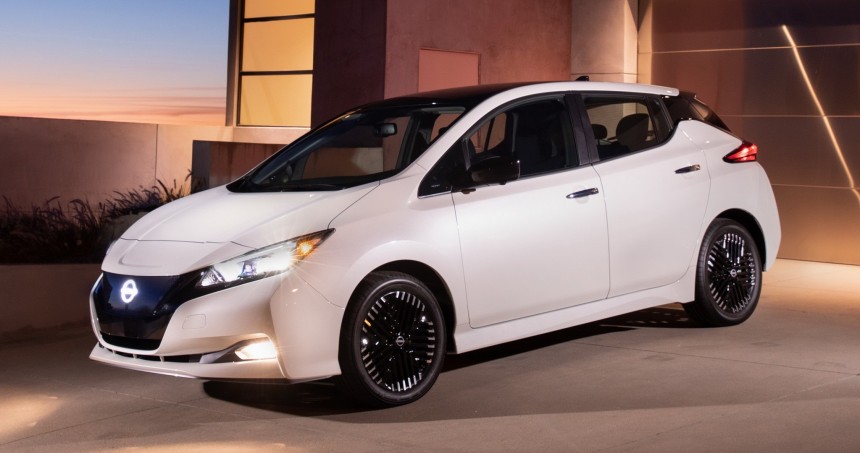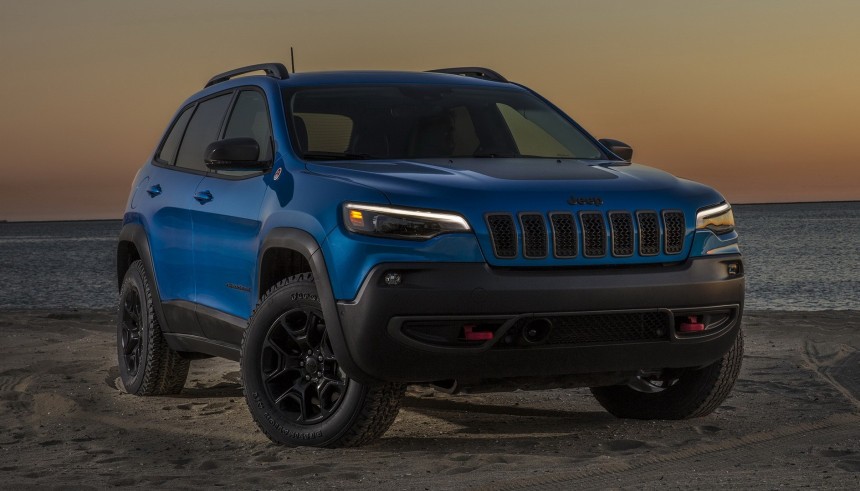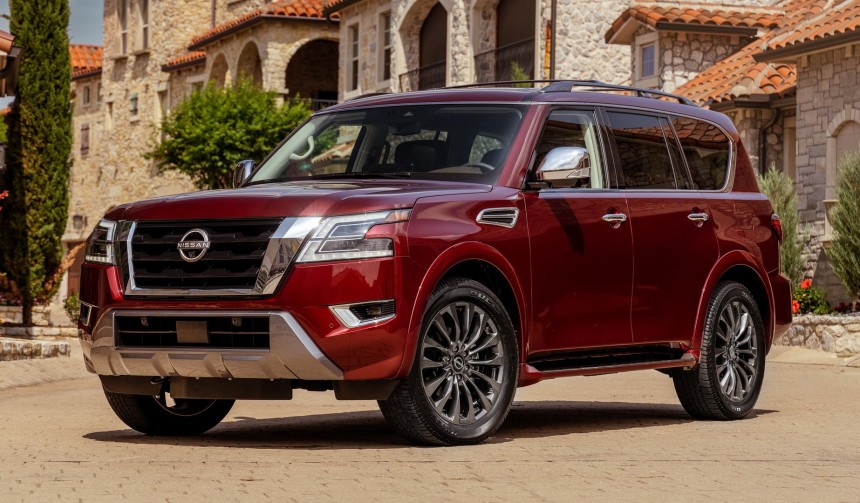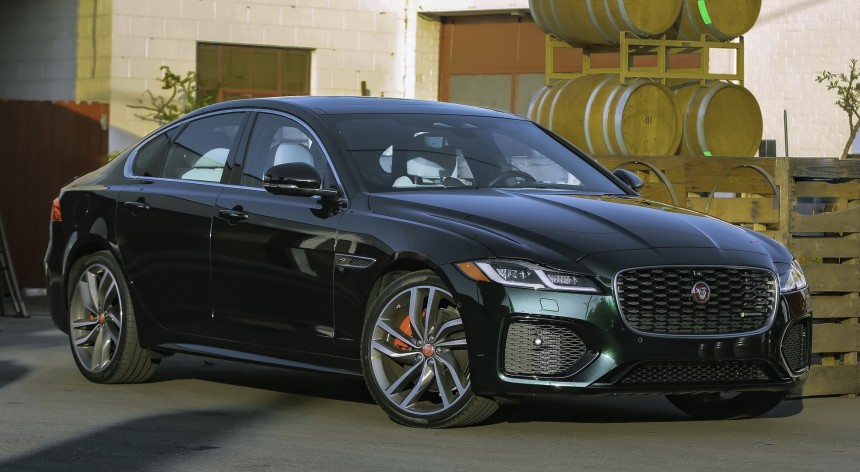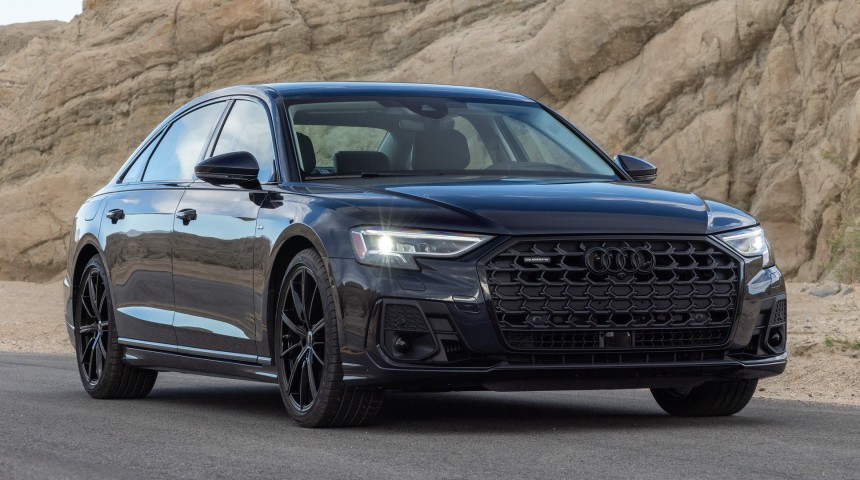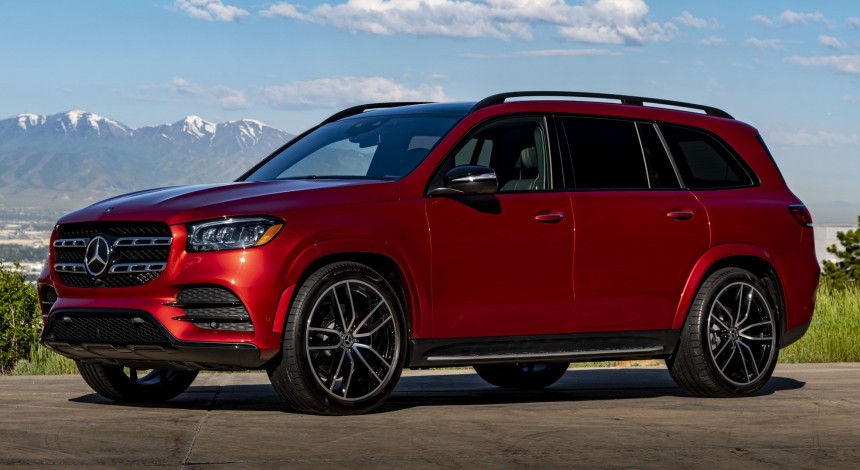As much as we like to not think about it, resale value is real and it affects all our lives, especially when it comes to cars bought at retail price. On a used car, you’re not taking as big a hit as you are on a brand-new model as soon as you drive the latter off the lot, which is why it’s often a good idea to buy used.
Unfortunately, when it comes to automotive journalism, the business is centered around new models, because that’s what carmakers are interested in promoting and that’s where the ad money goes. I feel like we’re getting off-track, sorry. Back to resale value.
I've looked at depreciation for both regular passenger cars and SUVs, as well as some luxury brands, and put together a Top 10 that features some of the worst resale values in the entire industry. Is it a perfect Top 10? No, because that would only have premium models on it, which are always hit hardest by depreciation.
I looked at as many segments as possible, so as to give you a bird’s eye view of which models you should avoid buying new in 2023, if you’re at all concerned about depreciation over the span of 5 years. Some of these cars will seem like obvious choices, whereas others might surprise, or even shock you. Let’s get started.
If the GT-R is Godzilla, then depreciation is definitely Kong in this scenario, and they kind of go hand in hand, or rather hand to hand, if we’re talking combat.
In a way, it makes perfect sense for the GT-R to be on our list, seeing as how aside from a few minor upgrades, this is the same car that went into production back in December of 2007. The world was a completely different place back then and so was the supercar sector, which the GT-R thoroughly disrupted.
It broke the Internet before “breaking the Internet” was even a thing, and it was all thanks to its incredible 3.8-liter twin turbocharged V6 engine, rated initially at 473 horsepower. Rest assured, it had plenty of muscle, and in a straight line, it could get you from rest to 60 mph in a mind-bending 3.6 seconds.
What’s even better was that it did so consistently, thanks to its all-wheel drive system. There were other supercars back then capable of similar numbers, but most had rear-wheel drive and were no match for the GT-R whenever they did multiple runs. Some of those RWD monsters simply wouldn’t hook properly.
Anyway, the fact that it’s showing its age speaks volumes right now as to why it’s been severely hit by depreciation. In a world of plug-in hybrid supercars with hypercar-like performance, the good old GT-R, while still great, is a lot less of a threat than it used to be.
Based on the metrics we’re looking at here, specifically a car’s 5-year residual value, a Nissan GT-R will only be worth 77% of its MSRP after five years of ownership. That’s not terrible at all, mind you – but this is only no.10 on our list and we’re ranking them from bad to worst. Also, it is pretty disconcerting once you factor in how lots of supercars nowadays will actually appreciate over time, value-wise.
I bet you weren’t expecting everyone’s favorite muscle car to find its way on this list and yet here we are. The metrics tell us that unless we’re talking about special edition or flagship specs, the Challenger holds the worst resale value among American muscle cars at 76%.
Again, not too bad, but if we’re looking strictly at this segment, you probably can’t do any worse from a financial standpoint. That being said, who the heck is going to say ‘no’ to a Challenger because of its subpar resale value? Not me, I can tell you that right now.
Now in its third generation, the Challenger isn’t too unlike the car that made its debut back in 2008 at the Chicago Auto Show looking retro AF. Over the years, Dodge made sure to make it even more aggressive and give it even more road presence, to the point where you end up with something truly bonkers, like a widebody Hellcat.
As for why the Mustang and Camaro fare better after 5 years of ownership, that’s because the former has just recently started its life as a seventh-generation model, whereas the Camaro, unlike the Challenger, went through a generational shift back in the mid 2010s (different design, different platform and so on).
I’ll admit that I’m just as surprised as you to see the Maxima on here, but among its peers, the numbers say that it’s right where it needs to be, boasting a 75% 5-year residual value – and keep in mind, this is the type of car that people really do keep around for that many years.
Speaking of people and what they tend to do, most of them will just buy something with a Toyota badge, and it’s not like they’ll have much choice in the matter, seeing as how Nissan will discontinue the Maxima for the U.S. and Canada after this year. It’s quite a blow, yes, but the moniker might get used on an upcoming battery electric sedan, so let’s not cry over spilled milk.
Regardless, if you fancy yourself a 2023 Maxima and you genuinely like the car, don’t worry too much about its resale value. Prices start from $38,340 and you get quite a bit of kit inside as standard, not to mention a 3.5-liter V6 engine, good for 300 horsepower. You also get Nissan’s class-exclusive Zero Gravity front seats at no extra cost, which you certainly cannot have on a 2023 Charger, Chrysler 300 or a Toyota Crown (the Avalon’s replacement).
Since I already touched on the Maxima and the non-premium mid-size sedan segment, I almost didn’t want to bring up the 300. However, at this point, the Chrysler is just a spokesmodel for getting long in the tooth, as far as the automotive industry is concerned.
Full disclosure, I actually admire the Chrysler 300, even to this day, despite the fact that it makes very little sense to buy one as opposed to any of its direct competitors. When the first-gen model made its debut back in 2005, it became one of the world’s most intriguing sedans almost overnight. The large grille, long hood, low roofline... it looked like something out of a Frank Miller graphic novel.
The second generation 300 was unveiled in 2011 and it’s been with us ever since – yes, it’s finally being discontinued, but Chrysler are keeping it in production until December of this year.
As for what this means in terms of residual value, you’re looking at roughly 74% over 5-years, according to CarEdge, although that surely depends on the status of the vehicle. You can get a 2018 or 2019 model for as little as $20,000 nowadays.
I am curious to see what happens over time to those 2,200 units (sold) of the limited edition 2023 Chrysler 300C. It’s possible that cars with very few miles on them might not depreciate all that much.
Funny to see the once ultra-popular Nissan LEAF on this list, right? I mean, that’s exactly what I thought when I saw the numbers. But the reality of the situation is this: the EV industry has come a long way in recent years and the LEAF, now in its second generation, isn’t as appealing as it once was due to range concerns and perhaps even its appearance.
In past years, EVs were expected to look quirky whereas today, we’ve got the likes of the Porsche Taycan, Audi e-tron GT or the Rolls-Royce Spectre. Electric can be beautiful, and vice versa. But back to the range concerns for a second, yes, I know that the 2024 LEAF isn’t exactly terrible in that department – up to 212 miles of range for the SV Plus specification. But that number is only decent for city usage.
Nowadays, people are buying EVs as their daily driver and they don’t want to be limited to just short distances.
So, what’s the number for the LEAF? We’re talking a 72.55% 5-year residual value, which is among the worst I could find in terms of non-premium models.
The 2023 Nissan LEAF can be purchased from $28,040 in ‘S’ specification, but if you want the bigger battery model, the SV Plus, that’ll set you back upwards of $36,040, which isn’t that far off what you’d be paying for an entry-level Tesla Model 3 – clearly the superior product.
In terms of non-premium compact SUVs, the Jeep Cherokee has been deemed as “depreciation champ” and it should come as no surprise.
For starters, production for this model ceased back in February of this year, so whatever you’re driving out of the dealer lot today is whatever they had left in stock. To make matters worse, we’re already dealing with an aging vehicle, having been in production since June of 2013. That’s right, nearly a 10-year life cycle for this so-called KL-generation Cherokee.
This might be one of the least desirable models ever produced by Jeep, together with the third-gen variant. Otherwise, I have nothing but respect for the Cherokee nameplate, especially the XJ – an iconic off-roader in pretty much everyone’s book.
Back to the KL, it was the very first Jeep vehicle to ride on FCA’s Compact U.S. Wide platform, and aside from updated styling in 2018 and a new (and rather potent) 2.0-liter turbocharged gasoline engine, there really wasn’t much to write home about when it came to the Cherokee, whose 5-year residual value stands at just 72.28%, which actually seems high. Let’s not forget we’re in a bubble right now, as far as the used car market is concerned, and that bubble could burst at any moment.
As for its MSRP, that would be $37,695, which also seems high, considering all the alternatives.
I've got nothing against Nissan, honest, but already four of their cars have found their way onto this list, which at the very least tells us that the carmaker isn’t doing a good enough job updating its model range. They say slow and steady wins the race, but not when there’s a sales prize involved.
The Nissan Armada is still in its second generation, following its unveiling at the 2016 Chicago Auto Show. An updated version would be revealed in late 2020, featuring a redesigned front end, larger grille, C-shaped LED headlights, redesigned LED taillights, refreshed interior (with a wider infotainment screen), improved connectivity, better safety tech and so on.
Yet, you can only have it with a single powertrain, a 400 hp 5.6-liter Endurance V8 unit, which is good, but more variety would have been nice. Also, it has a starting MSRP of $50,700, which is quite competitive as far as the full-size SUV segment is concerned, but it’s still a lot of money for an outdated behemoth.
After 5 years, you can expect 68.80% residuals on it, which is probably too generous anyway given where the industry is headed. This entire list could become obsolete at any moment within the next few years, if/when the used car market bubble bursts.
I hate having the Jaguar XF on this list. It is such a nice thing to drive and be driven in. Yes, it’s not quite as modern as the latest E-Class or the latest 5 Series (to say the least), but that’s no excuse for its residuals to be nothing short of a bad joke – this has been going on for years.
There are several factors responsible for the XF’s value plummeting, the second one got driven off the dealership lot. You know that saying “Perception is Reality”? Well, reliability concerns, some true, some unfounded, have really impacted the XF when it comes to resale value.
Same goes for JLR’s dealership network, which is far from among the best in the country.
Still, this is good news for somebody who’s interested in picking up a really cheap XF, one that’s already taken a big hit in terms of residuals (after a certain point, depreciation slows). These are really impressive cars, technically speaking. Visually, too, if you like dynamic-looking British sedans.
So, what’s the number, you ask? That would be 63.41% after 5 years of ownership. As for buying a brand-new one, pricing in the U.S. starts from $49,800, which will land you the XF R-Dynamic SE specification, with 246 hp and a 0-60 mph time of 6.5 seconds. It’s not bad at all.
Hold on to your hats, because this one’s a doozy. If you buy a 2023 Audi A8 today, you can expect 5-year residuals to be as low as 50%, which really stings, especially on such an expensive car.
You can get one starting from $87,800, which lands you the so-called entry-level spec, the A8 L 55 TFSI quattro, powered by a turbocharged 3.0-liter six-cylinder gasoline engine, sending 335 hp and 369 lb-ft of torque to all four wheels via an eight-speed Tiptronic gearbox.
It’s quick, needing just 5.6 seconds to get you from zero to 60 mph. Meanwhile, the S8 variant starts from $120,500, offering up a twin-turbocharged 4.0-liter V8, making 563 hp and 590 lb-ft of torque. This spec needs just 3.8 seconds to hit 60 mph. Unfortunately, the S8 also suffers badly from depreciation – or about the same as car no. 3 on our list, the Jaguar XF.
Let’s be clear, the 2023 Audi A8 is a brilliant luxury sedan, and if you ever find yourself driving one, I can pretty much guarantee total satisfaction on your end. Of course, residuals rarely take satisfaction into account, and the A8 finds itself powerless against its main rivals (the Mercedes S-Class and BMW 7 Series), because they all possess considerably newer technology.
In other words, if you’re in the market for a luxury sedan, you’ll probably just end up buying the Merc or the Bimmer.
Coming in at no. 1 on our list is a true Stuttgart Behemoth, an SUV whose only goal is to be the ultimate family vacation car – the Mercedes GLS.
Now in its third generation following a world debut at the 2019 NY International Auto Show, the GLS is a fine vehicle. It’s very good at its job, in the sense that it’s comfortable, safe, refined and somewhat imposing, although the styling does usually split opinions.
You can buy a brand new one in the U.S. from $81,800, which will land you the GLS 450 variant, whereas $105,000 will result in a GLS 580. The former is powered by a 3.0-liter inline-6 turbo mild-hybrid engine, good for 362 hp and 369 lb-ft of torque. The latter, meanwhile, packs a 4.0-liter biturbo V8, also with mild-hybrid drive, and 483 hp to go with 516 lb-ft of torque.
Sounds pretty good on paper, right? Well, the GLS now faces much stronger competition ever since BMW came out with the X7. Plus, you’ve got the new Range Rover, new Escalade – it's no wonder the Merc’s residuals are what they are, specifically hovering around the 47.62% mark. This is one SUV people should really be wary of when purchasing new.
I've looked at depreciation for both regular passenger cars and SUVs, as well as some luxury brands, and put together a Top 10 that features some of the worst resale values in the entire industry. Is it a perfect Top 10? No, because that would only have premium models on it, which are always hit hardest by depreciation.
I looked at as many segments as possible, so as to give you a bird’s eye view of which models you should avoid buying new in 2023, if you’re at all concerned about depreciation over the span of 5 years. Some of these cars will seem like obvious choices, whereas others might surprise, or even shock you. Let’s get started.
10. Nissan GT-R
In a way, it makes perfect sense for the GT-R to be on our list, seeing as how aside from a few minor upgrades, this is the same car that went into production back in December of 2007. The world was a completely different place back then and so was the supercar sector, which the GT-R thoroughly disrupted.
It broke the Internet before “breaking the Internet” was even a thing, and it was all thanks to its incredible 3.8-liter twin turbocharged V6 engine, rated initially at 473 horsepower. Rest assured, it had plenty of muscle, and in a straight line, it could get you from rest to 60 mph in a mind-bending 3.6 seconds.
What’s even better was that it did so consistently, thanks to its all-wheel drive system. There were other supercars back then capable of similar numbers, but most had rear-wheel drive and were no match for the GT-R whenever they did multiple runs. Some of those RWD monsters simply wouldn’t hook properly.
Anyway, the fact that it’s showing its age speaks volumes right now as to why it’s been severely hit by depreciation. In a world of plug-in hybrid supercars with hypercar-like performance, the good old GT-R, while still great, is a lot less of a threat than it used to be.
Based on the metrics we’re looking at here, specifically a car’s 5-year residual value, a Nissan GT-R will only be worth 77% of its MSRP after five years of ownership. That’s not terrible at all, mind you – but this is only no.10 on our list and we’re ranking them from bad to worst. Also, it is pretty disconcerting once you factor in how lots of supercars nowadays will actually appreciate over time, value-wise.
9. Dodge Challenger
Again, not too bad, but if we’re looking strictly at this segment, you probably can’t do any worse from a financial standpoint. That being said, who the heck is going to say ‘no’ to a Challenger because of its subpar resale value? Not me, I can tell you that right now.
Now in its third generation, the Challenger isn’t too unlike the car that made its debut back in 2008 at the Chicago Auto Show looking retro AF. Over the years, Dodge made sure to make it even more aggressive and give it even more road presence, to the point where you end up with something truly bonkers, like a widebody Hellcat.
As for why the Mustang and Camaro fare better after 5 years of ownership, that’s because the former has just recently started its life as a seventh-generation model, whereas the Camaro, unlike the Challenger, went through a generational shift back in the mid 2010s (different design, different platform and so on).
8. Nissan Maxima
Speaking of people and what they tend to do, most of them will just buy something with a Toyota badge, and it’s not like they’ll have much choice in the matter, seeing as how Nissan will discontinue the Maxima for the U.S. and Canada after this year. It’s quite a blow, yes, but the moniker might get used on an upcoming battery electric sedan, so let’s not cry over spilled milk.
Regardless, if you fancy yourself a 2023 Maxima and you genuinely like the car, don’t worry too much about its resale value. Prices start from $38,340 and you get quite a bit of kit inside as standard, not to mention a 3.5-liter V6 engine, good for 300 horsepower. You also get Nissan’s class-exclusive Zero Gravity front seats at no extra cost, which you certainly cannot have on a 2023 Charger, Chrysler 300 or a Toyota Crown (the Avalon’s replacement).
7. Chrysler 300
Full disclosure, I actually admire the Chrysler 300, even to this day, despite the fact that it makes very little sense to buy one as opposed to any of its direct competitors. When the first-gen model made its debut back in 2005, it became one of the world’s most intriguing sedans almost overnight. The large grille, long hood, low roofline... it looked like something out of a Frank Miller graphic novel.
The second generation 300 was unveiled in 2011 and it’s been with us ever since – yes, it’s finally being discontinued, but Chrysler are keeping it in production until December of this year.
As for what this means in terms of residual value, you’re looking at roughly 74% over 5-years, according to CarEdge, although that surely depends on the status of the vehicle. You can get a 2018 or 2019 model for as little as $20,000 nowadays.
I am curious to see what happens over time to those 2,200 units (sold) of the limited edition 2023 Chrysler 300C. It’s possible that cars with very few miles on them might not depreciate all that much.
6. Nissan LEAF
In past years, EVs were expected to look quirky whereas today, we’ve got the likes of the Porsche Taycan, Audi e-tron GT or the Rolls-Royce Spectre. Electric can be beautiful, and vice versa. But back to the range concerns for a second, yes, I know that the 2024 LEAF isn’t exactly terrible in that department – up to 212 miles of range for the SV Plus specification. But that number is only decent for city usage.
Nowadays, people are buying EVs as their daily driver and they don’t want to be limited to just short distances.
So, what’s the number for the LEAF? We’re talking a 72.55% 5-year residual value, which is among the worst I could find in terms of non-premium models.
The 2023 Nissan LEAF can be purchased from $28,040 in ‘S’ specification, but if you want the bigger battery model, the SV Plus, that’ll set you back upwards of $36,040, which isn’t that far off what you’d be paying for an entry-level Tesla Model 3 – clearly the superior product.
5. Jeep Cherokee
For starters, production for this model ceased back in February of this year, so whatever you’re driving out of the dealer lot today is whatever they had left in stock. To make matters worse, we’re already dealing with an aging vehicle, having been in production since June of 2013. That’s right, nearly a 10-year life cycle for this so-called KL-generation Cherokee.
This might be one of the least desirable models ever produced by Jeep, together with the third-gen variant. Otherwise, I have nothing but respect for the Cherokee nameplate, especially the XJ – an iconic off-roader in pretty much everyone’s book.
Back to the KL, it was the very first Jeep vehicle to ride on FCA’s Compact U.S. Wide platform, and aside from updated styling in 2018 and a new (and rather potent) 2.0-liter turbocharged gasoline engine, there really wasn’t much to write home about when it came to the Cherokee, whose 5-year residual value stands at just 72.28%, which actually seems high. Let’s not forget we’re in a bubble right now, as far as the used car market is concerned, and that bubble could burst at any moment.
As for its MSRP, that would be $37,695, which also seems high, considering all the alternatives.
4. Nissan Armada
The Nissan Armada is still in its second generation, following its unveiling at the 2016 Chicago Auto Show. An updated version would be revealed in late 2020, featuring a redesigned front end, larger grille, C-shaped LED headlights, redesigned LED taillights, refreshed interior (with a wider infotainment screen), improved connectivity, better safety tech and so on.
Yet, you can only have it with a single powertrain, a 400 hp 5.6-liter Endurance V8 unit, which is good, but more variety would have been nice. Also, it has a starting MSRP of $50,700, which is quite competitive as far as the full-size SUV segment is concerned, but it’s still a lot of money for an outdated behemoth.
After 5 years, you can expect 68.80% residuals on it, which is probably too generous anyway given where the industry is headed. This entire list could become obsolete at any moment within the next few years, if/when the used car market bubble bursts.
3. Jaguar XF
There are several factors responsible for the XF’s value plummeting, the second one got driven off the dealership lot. You know that saying “Perception is Reality”? Well, reliability concerns, some true, some unfounded, have really impacted the XF when it comes to resale value.
Same goes for JLR’s dealership network, which is far from among the best in the country.
Still, this is good news for somebody who’s interested in picking up a really cheap XF, one that’s already taken a big hit in terms of residuals (after a certain point, depreciation slows). These are really impressive cars, technically speaking. Visually, too, if you like dynamic-looking British sedans.
So, what’s the number, you ask? That would be 63.41% after 5 years of ownership. As for buying a brand-new one, pricing in the U.S. starts from $49,800, which will land you the XF R-Dynamic SE specification, with 246 hp and a 0-60 mph time of 6.5 seconds. It’s not bad at all.
2. Audi A8
You can get one starting from $87,800, which lands you the so-called entry-level spec, the A8 L 55 TFSI quattro, powered by a turbocharged 3.0-liter six-cylinder gasoline engine, sending 335 hp and 369 lb-ft of torque to all four wheels via an eight-speed Tiptronic gearbox.
It’s quick, needing just 5.6 seconds to get you from zero to 60 mph. Meanwhile, the S8 variant starts from $120,500, offering up a twin-turbocharged 4.0-liter V8, making 563 hp and 590 lb-ft of torque. This spec needs just 3.8 seconds to hit 60 mph. Unfortunately, the S8 also suffers badly from depreciation – or about the same as car no. 3 on our list, the Jaguar XF.
Let’s be clear, the 2023 Audi A8 is a brilliant luxury sedan, and if you ever find yourself driving one, I can pretty much guarantee total satisfaction on your end. Of course, residuals rarely take satisfaction into account, and the A8 finds itself powerless against its main rivals (the Mercedes S-Class and BMW 7 Series), because they all possess considerably newer technology.
In other words, if you’re in the market for a luxury sedan, you’ll probably just end up buying the Merc or the Bimmer.
1. Mercedes-Benz GLS
Now in its third generation following a world debut at the 2019 NY International Auto Show, the GLS is a fine vehicle. It’s very good at its job, in the sense that it’s comfortable, safe, refined and somewhat imposing, although the styling does usually split opinions.
You can buy a brand new one in the U.S. from $81,800, which will land you the GLS 450 variant, whereas $105,000 will result in a GLS 580. The former is powered by a 3.0-liter inline-6 turbo mild-hybrid engine, good for 362 hp and 369 lb-ft of torque. The latter, meanwhile, packs a 4.0-liter biturbo V8, also with mild-hybrid drive, and 483 hp to go with 516 lb-ft of torque.
Sounds pretty good on paper, right? Well, the GLS now faces much stronger competition ever since BMW came out with the X7. Plus, you’ve got the new Range Rover, new Escalade – it's no wonder the Merc’s residuals are what they are, specifically hovering around the 47.62% mark. This is one SUV people should really be wary of when purchasing new.
